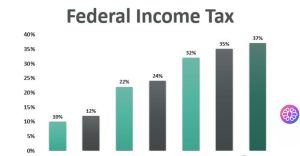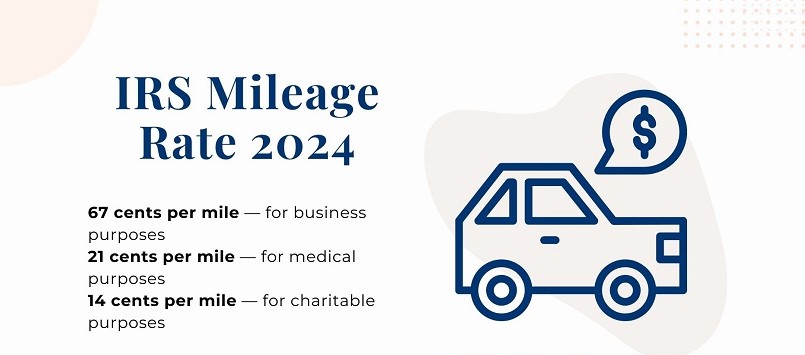Federal Mileage Rate: Everything You Need to Know
When it comes to business expenses, one of the most important and often overlooked deductions is mileage. The federal mileage rate helps individuals and businesses calculate the standard rate at which they can deduct their vehicle usage for work-related travel. Whether you’re a freelancer, a contractor, or a full-time employee, understanding the federal mileage rate is crucial for reducing your tax liabilities.
In this blog post, we’ll break down the federal mileage rates for 2023, 2024, and 2025, explain how you can apply them, and offer tips on accurately tracking your mileage for tax purposes.
What is the Federal Mileage Rate?
The federal mileage rate is a standard rate set by the U.S. Internal Revenue Service (IRS) that allows taxpayers to deduct a fixed amount per mile for business-related vehicle usage. This rate can fluctuate each year based on factors like fuel prices, vehicle maintenance costs, and inflation. By using the federal mileage rate, individuals and businesses can avoid the complexity of tracking actual vehicle expenses, like gas, maintenance, and depreciation.
Federal Mileage Rate 2023
For the year 2023, the federal mileage rate was set at 65.5 cents per mile. This was a significant increase from the previous year’s rate, reflecting higher fuel prices and other inflationary costs. If you were using your vehicle for business purposes in 2023, you were eligible to deduct 65.5 cents for each mile driven.
This rate applies to most types of business-related travel, including:
- Traveling between job sites for contractors
- Visiting clients or customers
- Running business errands
- Delivering goods or services
It’s important to note that the IRS does not allow you to deduct commuting expenses, such as driving from your home to your regular place of work.

Federal Mileage Rate 2024
For 2024, the IRS has set the federal mileage rate at 67.5 cents per mile. This increase reflects continued inflationary pressures and higher transportation costs across the country. The slight uptick in the rate makes it more advantageous for business owners and employees who need to drive for work-related reasons.
Some of the key expenses covered by the federal mileage rate in 2024 include:
- Vehicle wear and tear
- Fuel costs
- Maintenance and repairs
- Depreciation
If you’re a business owner or self-employed, this mileage rate can significantly reduce your taxable income, especially if you’re on the road frequently.
Federal Mileage Rate 2025: What to Expect
As we look ahead to 2025, it’s hard to predict exactly what the federal mileage rate will be. However, historical trends suggest that the IRS will adjust the rate to reflect economic conditions, fuel prices, and inflation. For now, it’s safe to assume that the mileage rate for 2025 could be slightly higher than 2024’s rate of 67.5 cents per mile.
To prepare for potential increases in 2025, it’s a good idea to:
- Stay updated with IRS announcements regarding mileage rates
- Keep track of your business miles diligently
- Estimate potential mileage deductions for future tax planning
How to Track Your Mileage for Business Purposes
Accurate mileage tracking is essential to maximize your tax deductions. Here are some tips for effectively tracking your mileage:
- Use a Mileage Logbook
Keeping a physical or digital logbook of your mileage can ensure that you’re recording every business trip. Include details such as the date, the purpose of the trip, and the total miles driven. - Leverage Mileage Apps
There are several mileage tracking apps available that automatically record your trips. Apps like MileIQ, Everlance, and Stride can sync with your phone’s GPS, making it easier to log your miles without manually inputting each trip. - Track Your Odometer
In addition to logging each trip, make it a habit to take note of your vehicle’s odometer reading at the start and end of each trip. This will give you an accurate account of the total miles driven. - Know Your Business Travel
Always ensure that the trips you’re tracking are for business purposes. As mentioned earlier, commuting from home to your regular job is not deductible.
Can You Deduct Other Vehicle Expenses?
While the federal mileage rate covers most vehicle-related expenses, some taxpayers may still be able to deduct additional vehicle-related costs. For instance, if you opt to track your actual expenses rather than using the standard mileage rate, you may be eligible for deductions related to:
- Gas
- Parking fees
- Tolls
- Car washes
To claim these additional expenses, you will need to provide documentation, such as receipts, and maintain detailed records of the costs incurred.
Why the Federal Mileage Rate Matters
Understanding the federal mileage rate is essential for anyone who uses their vehicle for work purposes. By tracking and applying the rate correctly, you can:
- Lower your tax liability
- Avoid costly mistakes on your tax return
- Maximize your deductions and business expenses
If you own a business, especially one that requires significant travel, the savings from mileage deductions can be substantial.
Frequently Asked Questions
What is the federal mileage rate for 2023?
The federal mileage rate for 2023 is 65.5 cents per mile. This rate applies to most business-related travel in that year.
Can I deduct my commute to work?
No, the IRS does not allow you to deduct commuting miles, which are the miles driven between your home and your regular place of work.
How do I calculate my mileage deductions for 2024?
For 2024, the mileage rate is 67.5 cents per mile. Simply multiply the miles you’ve driven for business purposes by this rate to calculate your deduction.
Can I use an app to track my business mileage?
Yes! Several apps like MileIQ, Stride, and Everlance help you automatically track your mileage and calculate potential deductions.
What if I use my car for both business and personal trips?
You can only deduct the miles that are used for business purposes. Make sure to keep a detailed record of business versus personal miles to accurately calculate your deduction.
How often does the IRS update the federal mileage rate?
The IRS typically updates the FMR annually, often in the final quarter of the year. It may change due to inflation or other economic factors.
Conclusion
In conclusion, the federal mileage rate is a vital tool for reducing tax liabilities for anyone who uses their vehicle for business purposes. With the FMR for 2023 set at 65.5 cents per mile and the 2024 rate rising to 67.5 cents, now is the time to start tracking your mileage for maximum deductions. Whether you’re using the rate for business trips, deliveries, or client visits, these deductions can have a significant impact on your bottom line.
As we approach 2025, it’s important to stay updated on any changes to the mileage rate, as well as keep thorough records of your business-related travel. By being proactive and organized, you can ensure that your mileage deductions are accurate and beneficial when tax season arrives.



